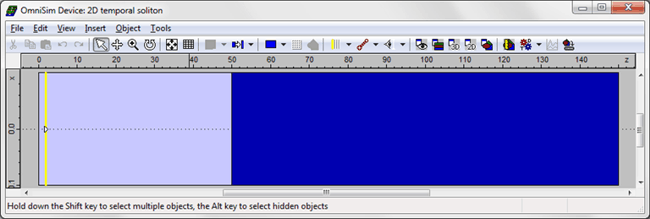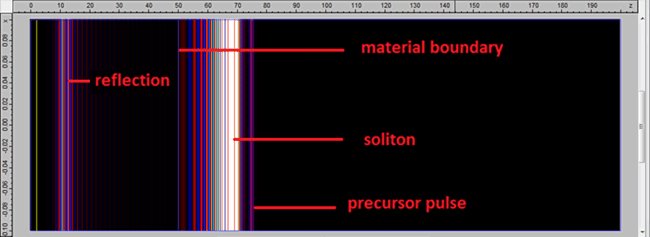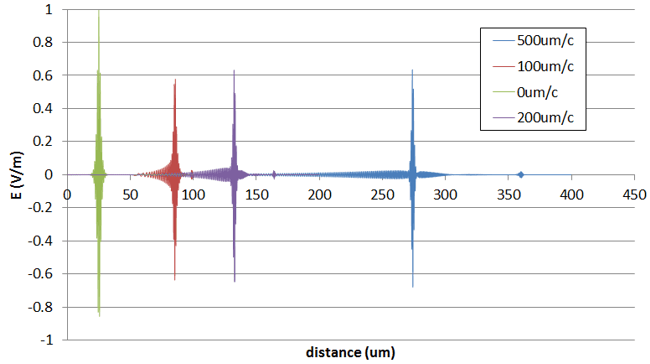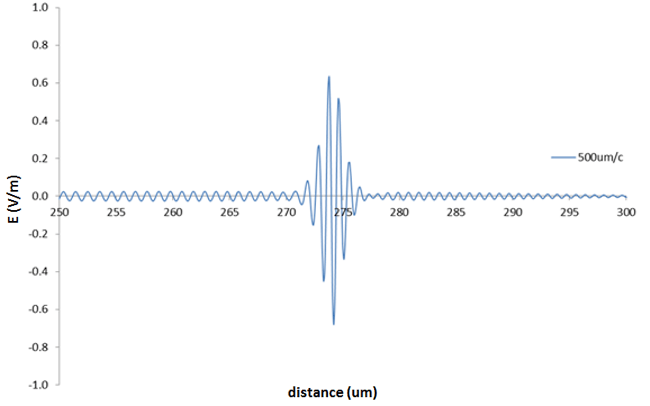OmniSimOmni-directional photonic simulations |
    |
Nonlinear FETD (volume chi-3): temporal solitonsSimulation of chi-3 nonlinearity using OmniSim FETDOmniSim’s FETD engine features the capability to simulate an isotropic instantaneous Kerr chi-3 nonlinear response, concurrently with the other models of linear dispersion (Drude, Lorentz etc). Here we will show how chi-3 nonlinearity can lead to the formation of a temporal soliton, as presented in [1]. Simply put, the soliton is a propagating solution of the nonlinear field equations which maintains a localized and constant shape due to the competing influences of the linear dispersion and the nonlinear response.
The device consists of a 50um vacuum region followed by a region containing a material which has a linear dispersion given by a single-pole Lorentz model with an additional instantaneous Kerr chi-3 nonlinear response given by:
The device was excited with a right-moving initial pulse with a hyperbolic secant profile. This was allowed to propagate into the region containing the nonlinear and dispersive material and the formation of a soliton was observed.
The overall form of the propagating field shows a very close resemblance to the results illustrated in [1]. Identical results were obtained from 2D and 3D FETD simulations.
References[1] "Computational Electrodynamics: The Finite-Difference Time-Domain Method", A. Taflove, S. Hagness; Artech House. Ch.9 "Dispersive and nonlinear materials".
|








